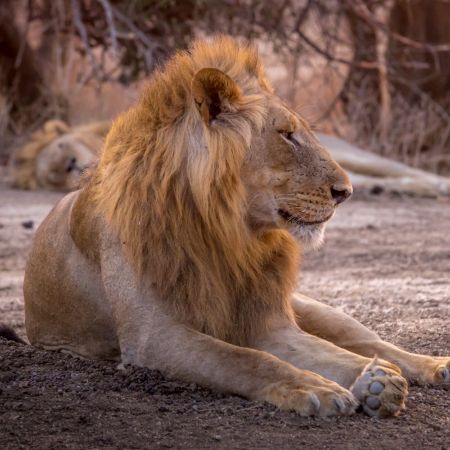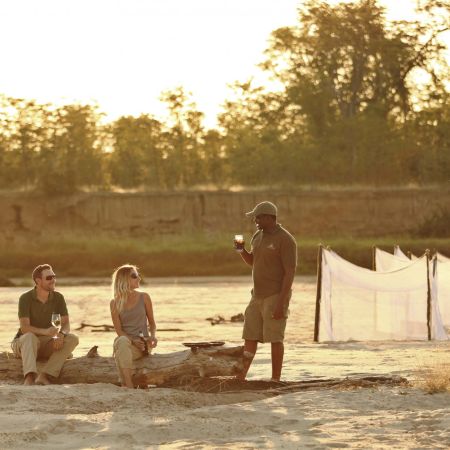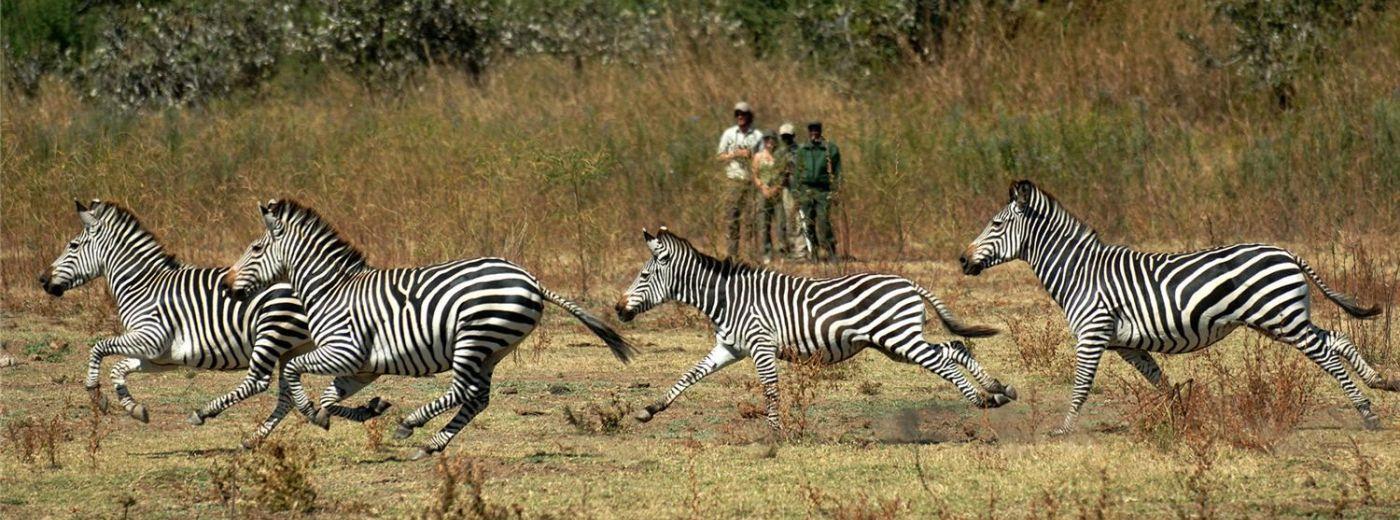Zambia's premier National Park
The South Luangwa National Park is an impressive 9,050 km², and is Zambia’s premier National Park. Unspoilt and beautiful, the Park is home to a diverse range of habitats, ranging from woodland and grasslands to huge ox bow lagoons and tributaries that form part of the Luangwa River system that runs down the entire length of the Park.
 The Park boasts a wide variety of wildlife species, and visitors on safari here cannot fail to be impressed by the sheer number of game that can be seen on the daily morning and afternoon drives or bush walks. Leopard in particular are extremely frequent sightings, and lion and wild dog are also abundant. There is estimated to be at least 50 hippos per kilometre of the Luangwa River, and there are also a high number of crocodiles basking on the riverbanks. Zebra can be seen running in small herds, and large herds of elephant and buffalo are common. The Park is also home to 14 species of antelope, and has 2 endemic wildlife species - the Thornicoft giraffe and the Cookson's wildebeest.
The Park boasts a wide variety of wildlife species, and visitors on safari here cannot fail to be impressed by the sheer number of game that can be seen on the daily morning and afternoon drives or bush walks. Leopard in particular are extremely frequent sightings, and lion and wild dog are also abundant. There is estimated to be at least 50 hippos per kilometre of the Luangwa River, and there are also a high number of crocodiles basking on the riverbanks. Zebra can be seen running in small herds, and large herds of elephant and buffalo are common. The Park is also home to 14 species of antelope, and has 2 endemic wildlife species - the Thornicoft giraffe and the Cookson's wildebeest.
The birdlife is excellent, with around 450 species to be seen - but the biggest draw for birders is when the brightly coloured Carmine Bee-Eaters arrive from southern Mozambique mid-August to breed, and nest in excavated tunnels along the banks of the Luangwa River - with colonies stretching up to hundreds of metres. These stunning creatures spend the day darting in and out of the nesting holes, with sometimes as many as 200 rising up together, circling around overhead, then swooping back down and disappearing into their private tunnel.
This is the ‘home’ of the walking safari adventure, and all the camps will offer short guided safari walks in the morning or the afternoon for guests staying with them.
For the more adventurous, head out for an afternoon walk and arrive late afternoon at a dry riverbed, where a 'fly camp' has been set up for you - settle in for the evening around the camp fire for dinner, then retire to your mosquito net and sleep under the stars, lulled to sleep by the noise of the bush. It is an experience that you will never forget.
 © Norman Carr SafarisFor the really keen walker, there is also the opportunity to walk between different camps, giving you the opportunity for a true safari adventure. If you want to don your walking boots and head into the bush, plan to visit between July and October, when the grasses have died back.
© Norman Carr SafarisFor the really keen walker, there is also the opportunity to walk between different camps, giving you the opportunity for a true safari adventure. If you want to don your walking boots and head into the bush, plan to visit between July and October, when the grasses have died back.
The peak time for travel to South Luangwa is during the dry months - so July to October - and this is when you can expect incredible game viewing. Towards the end of October, so when there has been no rain for a few months and the temperatures are extremely hot, the waterholes and parts of the Luangwa River dry almost completely up.
When the first rains start in November, the Park turns into a lush green landscape within a matter of days - hence the term 'Emerald Season'. The river then can get up to 4 metres deep in places, and 400 metres wide, and hippos in their hundreds are found basking in the water.
During this rainy season, which runs from November to end May (but bear in mind it does not rain every day!), many plains game including impala give birth, and the summer migrant birds return in all their fabulous coloured plumage. When the river is in full flow, a boating safari is one of the game activities on offer at the lodges and camps. This is also the period when rates are at their lowest - so there really is no reason not to consider travelling here at this time of the year! The only slight downside is that some camps do close over the Emerald Season and only reopen again in June, ready for the new peak season visitors.
Getting to South Luangwa couldn't be easier - visitors fly into Mfuwe Airport, and then your camp or lodge will meet you and transfer you by road - an interesting journey through small local villages of about 45 minutes - to the Park entrance gate. From here, the transfer turns into an additional game drive, taking anything from a few minutes to 2 hours depending on where you are staying.

